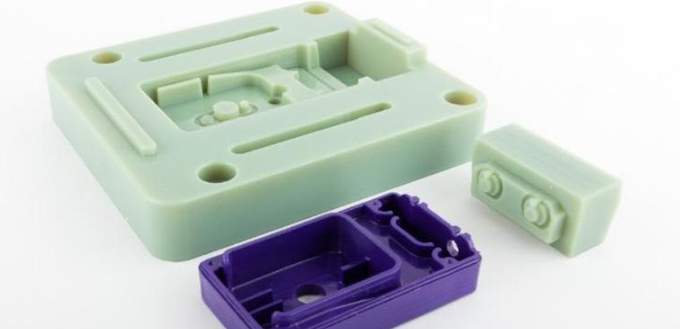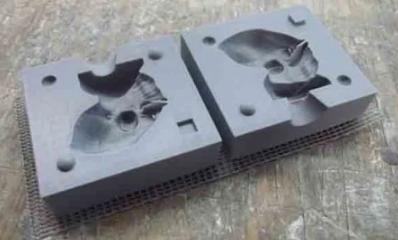Injection molding is ideal for high-volume production with consistent quality, while FDM allows for greater design flexibility in lower volumes.
Overview of Injection Molding and FDM
Basic Principles of Injection Molding
Injection molding, a manufacturing technique, mass-produces parts by injecting molten material into a mold. Plastic pellets are first melted in a heated barrel. The material is then injected into a mold cavity under high pressure. As it cools, the material solidifies into the mold’s shape, creating the final product. This process suits large-scale production, with cycle times around 15-30 seconds. However, its initial setup costs, including mold design, are high, making it less economical for small runs.

Basic Principles of Fused Deposition Modeling (FDM)
Fused Deposition Modeling (FDM) uses an additive approach to create objects. It extrudes thermoplastic filaments layer by layer. The filament, melted in a heated nozzle, is laid down in a path that builds the object. Each layer cools and solidifies rapidly, forming part of the object. FDM excels in customization and complex designs, offering layer resolutions of 0.1 to 0.3 mm. While slower and less material-efficient than injection molding, it’s more cost-effective for small-scale or bespoke items.
For further details, explore the Injection Molding and Fused Deposition Modeling pages on Wikipedia.
Material Compatibility and Usage
Types of Materials Used in Injection Molding
Injection molding machines accommodate a wide range of materials, primarily thermoplastics, thermosetting plastics, and metals. Common thermoplastics include polyethylene (PE), polypropylene (PP), and polystyrene (PS), known for their versatility and low cost. Thermosetting plastics like epoxy and phenolic resins offer higher thermal and chemical resistance, ideal for high-heat applications. Metal injection molding (MIM) uses powdered metals, typically stainless steel or titanium, offering strength comparable to wrought metals.
The choice of material affects the overall cost and efficiency of the production process. For instance, using high-performance plastics like PEEK can significantly increase material costs but offers superior properties like heat resistance and strength. The speed of the molding process varies depending on the material; faster cooling thermoplastics can reduce cycle times and increase productivity.
Types of Materials Used in FDM
FDM printers primarily use thermoplastic filaments. The most common are acrylonitrile butadiene styrene (ABS) and polylactic acid (PLA), balancing cost and ease of use. ABS is known for its strength and heat resistance, while PLA is favored for its biodegradability and lower printing temperature. More advanced materials like polyether ether ketone (PEEK) and nylon are also available, offering enhanced properties such as high thermal resistance and flexibility. However, these materials come with higher costs and may require specialized printers capable of handling higher extrusion temperatures.
The choice of material in FDM significantly influences print quality and application. For example, using flexible materials like TPU can open possibilities in creating parts with elasticity but might require slower printing speeds to ensure accuracy. The filament cost and print speed are crucial factors in determining the overall efficiency and expense of the FDM process.
For more comprehensive information on materials used in these processes, refer to the Thermoplastic Wikipedia page and the Fused Deposition Modeling Wikipedia page.
Technological Processes and Mechanisms
Process Workflow in Injection Molding
| Stage | Description | Key Factors |
|---|---|---|
| Material Preparation | Dry and feed plastic pellets into the machine. | Choice of material influences melting point and cycle time. |
| Melting | Heat and melt pellets in the barrel. | Efficient heating reduces energy use. |
| Injection | Inject molten plastic into the mold under pressure. | High pressure ensures detailed molding. |
| Cooling | Cool and solidify the material in the mold. | Cooling time affects cycle efficiency and quality. |
| Ejection | Eject the solid part from the mold. | Quick ejection minimizes cycle time and damage risks. |
Process Workflow in FDM
| Stage | Description | Key Factors |
|---|---|---|
| Filament Loading | Load thermoplastic filament into the printer. | Filament type dictates printing temperature and quality. |
| Heating | Heat filament to its melting point. | Accurate temperature control is crucial. |
| Extrusion | Extrude melted filament layer by layer. | Layer resolution impacts surface finish and detail. |
| Cooling | Cool and solidify each layer upon deposition. | Cooling rate influences layer bonding and strength. |
| Finishing | Remove supports and post-process the part. | Post-processing can improve surface and strength. |
For comprehensive details, the Injection Molding Wikipedia page and the Fused Deposition Modeling Wikipedia page are excellent resources.
Quality and Precision in Manufacturing
Surface Finish and Detail Resolution in Injection Molding
Injection molding is renowned for its ability to produce parts with high-quality surface finishes and fine details. The surface finish of injection molded parts is directly influenced by the mold’s quality. High-grade steel molds with smooth or textured surfaces lead to parts with equally high-quality finishes. Detail resolution in injection molding is exceptional, capable of producing features as small as 0.1 mm.

However, the cost of achieving such high precision and surface quality can be substantial. Precision molds require advanced manufacturing techniques and materials, which increase the initial investment. Despite the higher cost, the repeatability and speed of injection molding justify the investment for large-scale production runs.
Surface Finish and Detail Resolution in FDM
Fused Deposition Modeling (FDM) offers a different level of surface finish and detail resolution compared to injection molding. The layer-by-layer construction in FDM typically results in visible layer lines, giving a textured surface finish. The resolution of details in FDM is dependent on the nozzle size and the layer height, with standard resolutions ranging from 0.1 mm to 0.3 mm.
While post-processing methods like sanding and chemical smoothing can enhance the surface finish, achieving a high-quality appearance similar to injection molding requires additional time and resources. FDM’s strength lies in its flexibility and lower cost, making it suitable for prototypes and small-scale production where the surface finish is not the primary concern.
For more in-depth exploration, the Injection Molding Wikipedia page and the Fused Deposition Modeling Wikipedia page provide extensive information.




